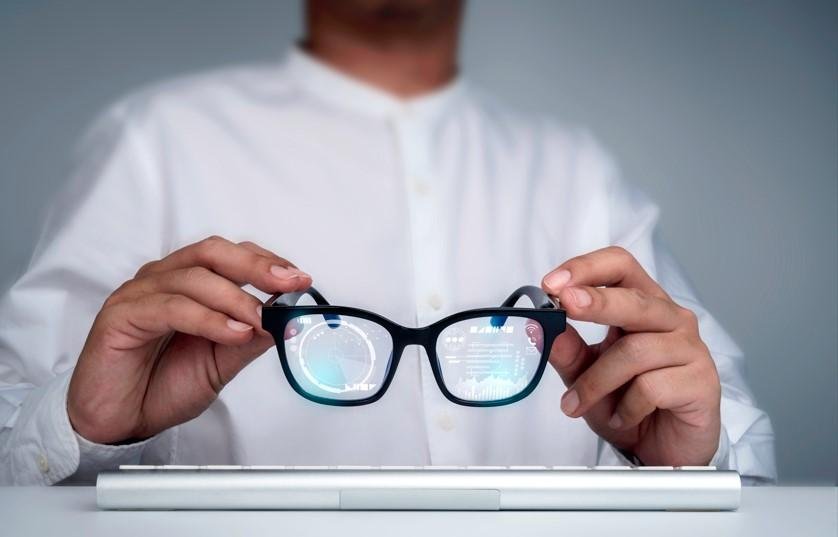Posted At: 8月 03, 2025 - 3 Views

Understanding the Smart Glasses Ecosystem
Smart glasses are more than just wearable tech—they represent a convergence of optical innovation, IoT, AI integration, and design engineering. To succeed, understanding the full product ecosystem is essential, including lenses, embedded displays, sensors, connectivity modules, and the software that ties everything together.
What Makes Smart Glasses "Smart"
- Augmented Reality (AR) Display
- Bluetooth & Wi-Fi Connectivity
- Voice Recognition & Microphone
- Environmental Sensors (GPS, Light, Gyroscope)
- Companion App Integration
Step 1: Ideation and Market Research
Start by identifying a specific use case: fitness, industrial, navigation, medical, or entertainment. Conduct competitor analysis and gather user feedback.
Key Market Sectors
| Sector | Application Example | Growth Forecast |
|---|---|---|
| Fitness | AR-guided workouts | High |
| Industrial | Remote diagnostics via AR | Medium |
| Navigation | Live GPS overlay | High |
| Medical | Surgery assistance | Medium |
| Entertainment | Gaming & immersive streaming | High |
Step 2: Hardware Design and Prototyping
After validating the idea, begin with CAD modeling and choose hardware components.
Core Components
- Processor (ARM Cortex, Snapdragon XR2)
- Microdisplay (OLED, LCoS, MicroLED)
- Battery (300–600mAh)
- Frame Material (Titanium, TR90, Carbon Fiber)
Example Cost Breakdown (Prototype)
| Component | Cost (RMB) | Cost (USD) |
| Display Unit | ¥1000 | ($140) |
| Microprocessor | ¥800 | ($112) |
| Battery & Charger | ¥500 | ($70) |
| Sensors + Modules | ¥600 | ($84) |
| Frame & Packaging | ¥800 | ($112) |
| Total | ¥3400 | ($476) |
Step 3: Software Development and UX/UI
Your smart glasses need a seamless user interface, usually synced with a mobile app.
Key Software Features
- Gesture & Voice Control
- Real-time Notification Display
- AR Overlay and Navigation
- Health Metrics Collection
Step 4: Supplier and Factory Selection
Selecting the right smart glasses supplier is critical. Evaluate:
Evaluation Criteria
- Manufacturing Capability
- R&D Support
- Certifications (CE, FCC, RoHS)
- MOQ Flexibility
- After-Sales Support
Supplier Comparison Chart
| Supplier Name | MOQ | Lead Time | R&D Team | ISO Certified |
| Supplier A | 500 | 45 Days | Yes | Yes |
| Supplier B | 1000 | 30 Days | No | Yes |
| SmartGlassesFactory | 300 | 35 Days | Yes | Yes |
Step 5: Pilot Production and Testing
Order a small batch to conduct real-world testing with potential users. Collect data on usability, battery life, and reliability.
Key Testing Metrics
- Boot Time
- Battery Duration
- Bluetooth Connectivity Stability
- AR Accuracy
- Field of View
Step 6: Pricing, Packaging, and Go-to-Market
Work on your pricing model based on cost, competitor pricing, and perceived value.
Suggested Retail Pricing
| Model Type | Cost (RMB) | Cost (USD) | Retail Price (USD) |
| Entry-Level AR | ¥3600 | ($504) | $699 |
| Mid-Tier Smart | ¥4500 | ($630) | $899 |
| Premium AR Pro | ¥5600 | ($784) | $1199 |
Step 7: Marketing and Distribution
Invest in influencer outreach, trade shows, SEO content, and retail partnerships.
Pie Chart: Marketing Budget Allocation
- Digital Advertising – 40%
- SEO Content Creation – 25%
- Events & Trade Shows – 15%
- Influencer Collaborations – 10%
- Public Relations – 10%
Step 8: Post-Launch Optimization
Monitor user reviews, conduct regular OTA software updates, and optimize hardware for next-generation models.
Key Metrics for Post-Launch
| Metric | Target Value |
| Daily Active Users | 20,000+ |
| App Crash Rate | <1% |
| Return Rate | <3% |
| Average Rating | >4.5 Stars |

